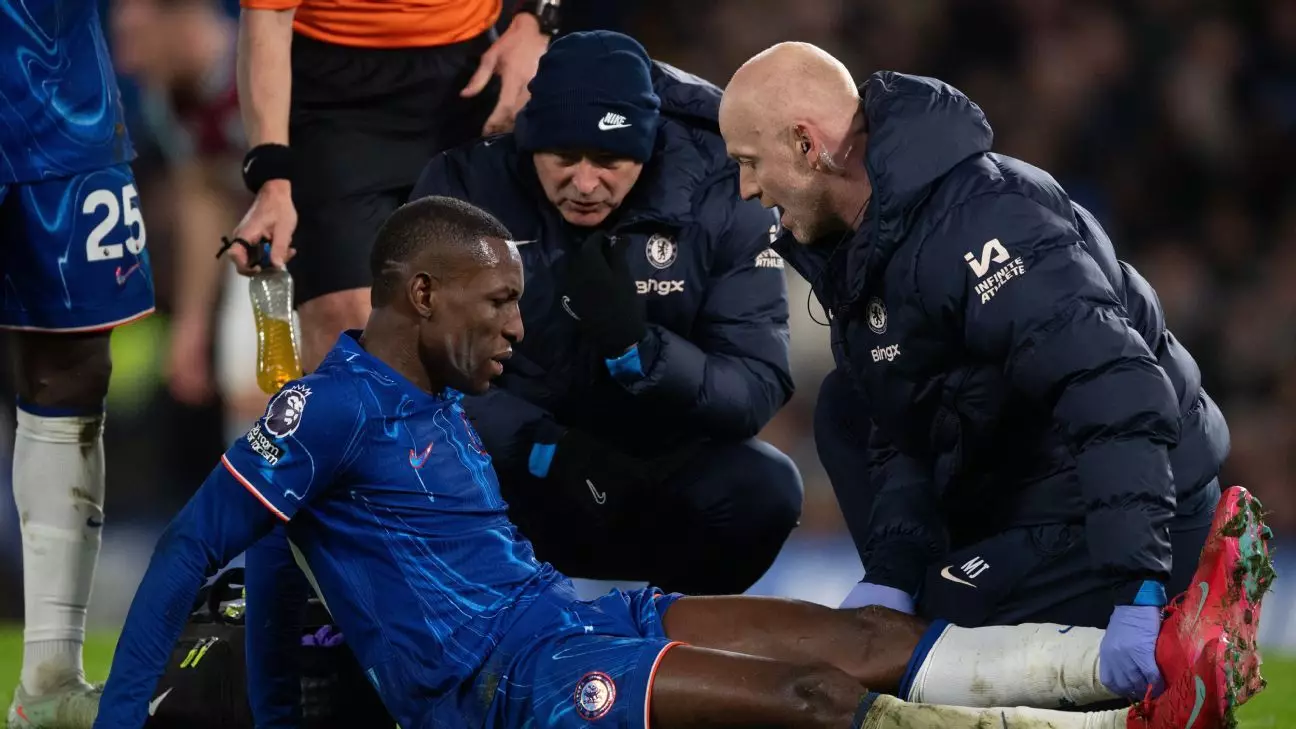In the world of football, injuries can disrupt even the most well-laid plans of coaches and teams. Chelsea Football Club is currently grappling with such a setback, as manager Enzo Maresca has revealed that striker Nicolas Jackson will not return to action until at least April due to a significant hamstring injury. This news has sent ripples of concern through the club, particularly given the timing of Jackson’s injury during a critical stretch of the season.
Nicolas Jackson has been an integral part of Chelsea’s attack this season, netting nine goals in 24 appearances. His injury, sustained during a match against West Ham on February 3, has occurred at a particularly challenging point in the season for the west London club. Initially, expectations were tempered with hopes for a swift recovery, but subsequent scans have revealed that the issue is more serious than anticipated, necessitating a recovery period of six to eight weeks.
Maresca emphasized the collective underappreciation of Jackson’s contributions, highlighting how the team’s dynamics shifted following his absence in their FA Cup exit against Brighton. The loss of a central figure like Jackson has underscored a widely recognized truth in football: that the absence of key players can often serve as a wake-up call to the value they bring to the squad. It compels the team to either recalibrate or risk further setbacks.
With Jackson sidelined, Maresca now faces the difficult task of restructuring his attack. The absence leaves the team thin on options for a central striker, prompting discussions about using Cole Palmer in a false nine role or possibly repurposing a winger to fill the gap. Each option comes with its own set of tactical implications.
The pivot towards an unorthodox lineup illustrates the fluid nature of team composition and the necessity for adaptability in football. Coaches like Maresca must weigh the benefits and drawbacks of various formations and player positions in real-time to maintain competitiveness. Given the glaring absence of a focused striker, opponents may find opportunities to exploit this vulnerability unless Chelsea can adapt swiftly.
In addition to the offensive reconfiguration, Chelsea is also undergoing changes in their defensive lineup. Filip Jørgensen has ascended to the role of first-choice goalkeeper, a decision borne out of necessity following Robert Sánchez’s series of costly mistakes. This transition reflects a broader theme of managerial courage: the choice to make significant, sometimes unpopular decisions in the interest of the team’s overall performance.
Maresca’s decision suggests confidence in Jørgensen’s abilities, hoping to instill stability at the back. The Italian manager’s remarks indicate a clear intention to allow Sánchez to regain his composure away from the glaring spotlight of competition. The mental and physical welfare of players is crucial, particularly when their confidence has been compromised.
Amidst the challenges posed by injuries, there is some optimism for Chelsea as they have players returning to fitness. Maresca indicated ongoing recoveries for Romeo Lavia and Benoît Badiashile, which could provide much-needed reinforcements in the coming weeks. Wesley Fofana’s anticipated return in two to three weeks could further bolster the squad, although immediate challenges remain.
As Chelsea approaches a significant league matchup against Brighton, the focus remains not only on tactical adjustments but also on fostering a resilient mentality among the existing players. Maresca seems aware of the uphill battle but acknowledges the need for collective effort in order to negotiate through this tough period.
Chelsea is in a state of flux, beset by injury woes and tactical challenges. How well the team navigates these hurdles will not only reflect Maresca’s managerial acumen but also the resilience of the squad in the face of adversity. The coming weeks will be a litmus test for the club’s depth and adaptability, with all eyes watching how the Blues rise to meet this demanding moment.

Leave a Reply